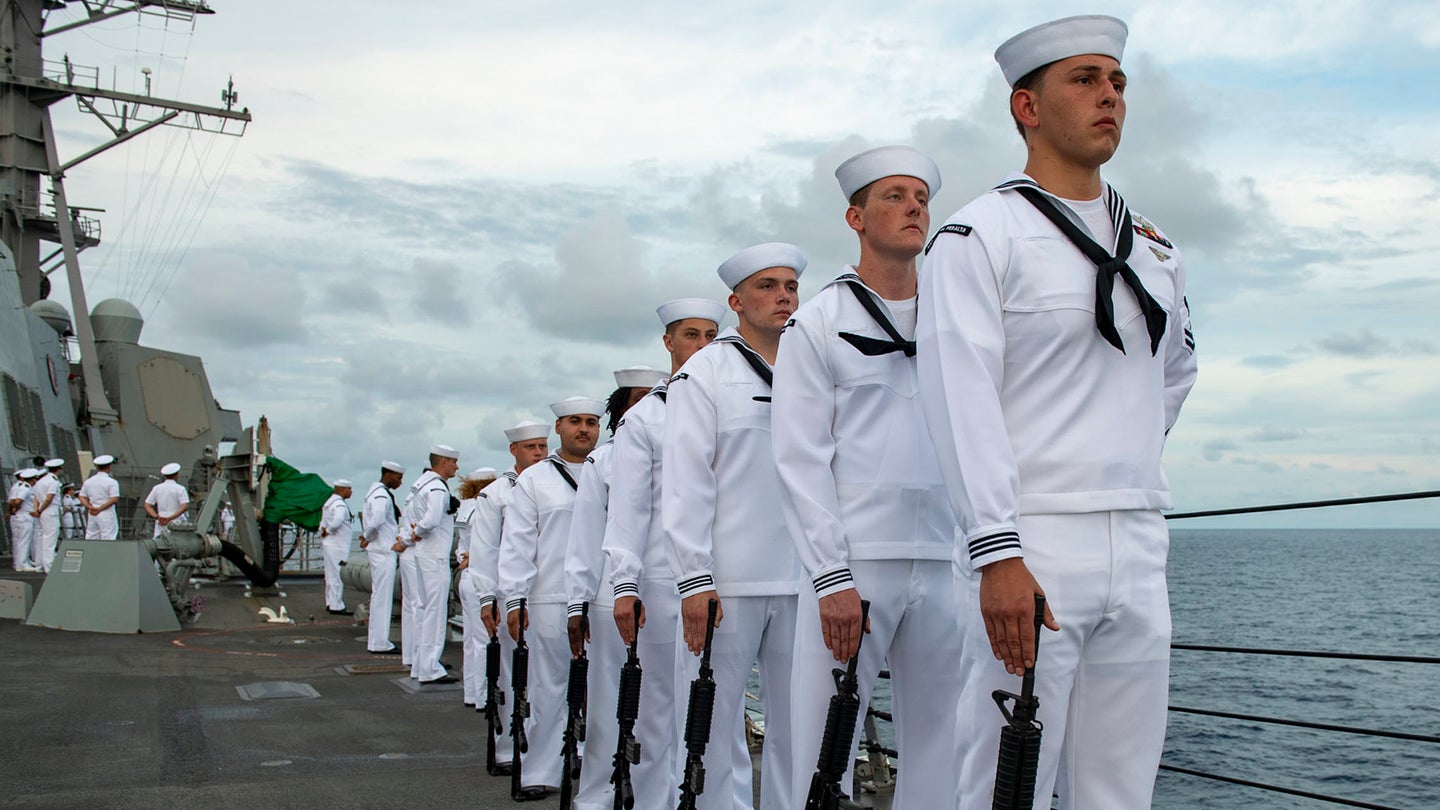Navy offers some sailors $100,000 to reenlist
The Navy has surpassed its retention goal for this fiscal year so far.

The good news for sailors looking for a nice cash bonus to reenlist is that those in one rating — cyber warfare technicians — are seeing a major increase in reenlistment bonuses and are now eligible for a whopping $100,000.
The not-so-good news is that there are only 22 of those sailors in the Navy who are eligible.
But across the fleet, bonuses are up or at least stayed flat for many ratings that were eligible in Fiscal Year 2023, Navy officials told Task & Purpose, as part of the most recent adjustments to the service’s Selective Reenlistment Bonuses, or SRBs. Some, though not all, Hospital Corpsman can also get $100,000, up from $90,000.
“SRBs are used to manage manning in specific ratings and NECs [Navy Enlisted Classifications], said Navy Capt. Jodie Cornell, a spokeswoman for the Chief of Naval Personnel. “SRBs incentivize experienced Sailors with critical skills to stay Navy. SRB award levels are continually adjusted to manage the real-time needs of the Navy and specific community retention goals.”
No bonuses were reduced nor were any ratings removed from the eligibility list as part of the latest changes, which became effective on April 15, Cornell told Task & Purpose.
The bonuses are awarded to sailors in three categories based on how long they have been in the Navy: Zone A refers to sailors with between one month and six years of service; Zone B includes sailors with between six and 10 years of service; and Zone C refers to sailors with between 10 and 14 years of service.
Cyber warfare technicians, or CWTs, saw the largest jump, with an increase to $100,000 in Zones A, B, and C. Prior to the changes, CWTs and Zones A and C were eligible for $60,000 and sailors in Zone B could collect a $75,000 reenlistment bonus.
Subscribe to Task & Purpose today. Get the latest military news and culture in your inbox daily.
The Navy created the CWT rating in response to the Fiscal Year 2023 National Defense Authorization Act, which required the Navy to separate the job from cryptologic technicians, officials said.
The CWT community is small, and only 11 sailors in Zone A, seven sailors in Zone B, and four in Zone C are eligible for the increased bonus, Cornell said.
Sailors in a separate community, cryptologic technician (technical) will see their bonus rise from $30,000 to $45,000 in Zones A and C, and from $45,000 to $60,000 in Zone C.
Sailors in this rating “use high-power jamming signals to deceive electronic sensors and prevent enemy attacks,” according to the Navy.
Selective Reenlistment Bonuses have also been increased from $45,000 to $60,000 for linguists in the Navy’s cryptologic technician interpretive rating who are in Zone C.
Several ratings have also been added to the list of those that are eligible for bonuses, including aerographer’s mates, who are experts in meteorology and oceanography, and the fire control technician rating, for sailors who maintain and operate submarines’ weapons systems.
The Navy has surpassed its retention goal for this fiscal year so far, Cornell said. As of the end of March, the service had retained 16,967 active-duty sailors, or nearly 108% of its goal.
However, the Navy continues to struggle with recruiting new recruits. The service missed its Fiscal 2023 recruiting goal by about 7,400 sailors, and it expects to fall short by roughly 6,700 new recruits in this fiscal year, which ends in October.
“We can absorb one year of recruiting misses, but multiple years would put additional stress on our force, which could have negative effects on readiness and potentially impact future retention, in an environment where retention is ever important,” Cornell told Task & Purpose previously. “The Navy continues to take a myriad of steps to ensure the Fleet is fully and properly manned, with the right Sailor, in the right place, at the right time, with the right training.”
The Navy is feeling the manning shortfalls most acutely with sailors at the rank of E-4 and below, known as the “apprentice level.”
In response to its recruiting challenges, the Navy has increased its maximum enlistment age to 42, made exceptions to allow recruits to sign up if they have tattoos on their neck and ears, and allowed recruits to retest earlier if they test positive for marijuana use prior to boot camp.
“I am incredibly proud of our recruiting workforce,” Navy Vice Adm. Rick Cheeseman, Chief of Naval Personnel, posted on X on April 17. “While we are forecasting a miss to our goal, we are closing the gap every day and I know our Sailors are doing everything to remove barriers and find talent to serve in our Navy. We are contracting more future Sailors; we are getting out in the communities to inform them about the great thing our Navy does; and our Fleet continues to make a difference globally every day.”
The latest on Task & Purpose
- 75th Ranger Regiment sweeps Best Ranger, Best Mortar, and International Sniper competitions
- Married Army couple win back-to-back Sapper school awards
- Special Forces engineers are training to dig ditches and destroy tanks
- This is why Marines were at Mar-a-Lago
- Supreme Court sides with Army veteran in overlapping GI Bill benefits case
